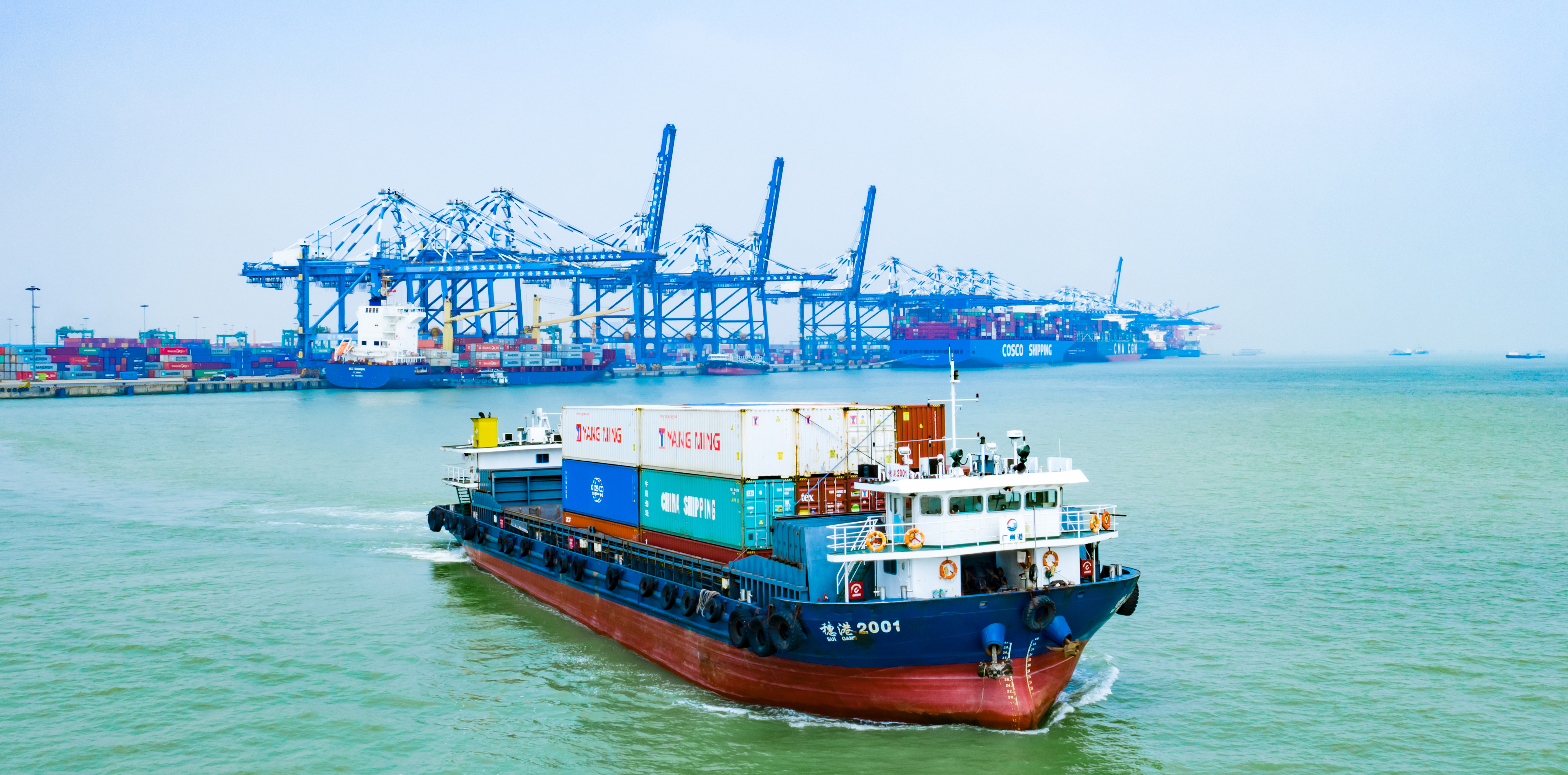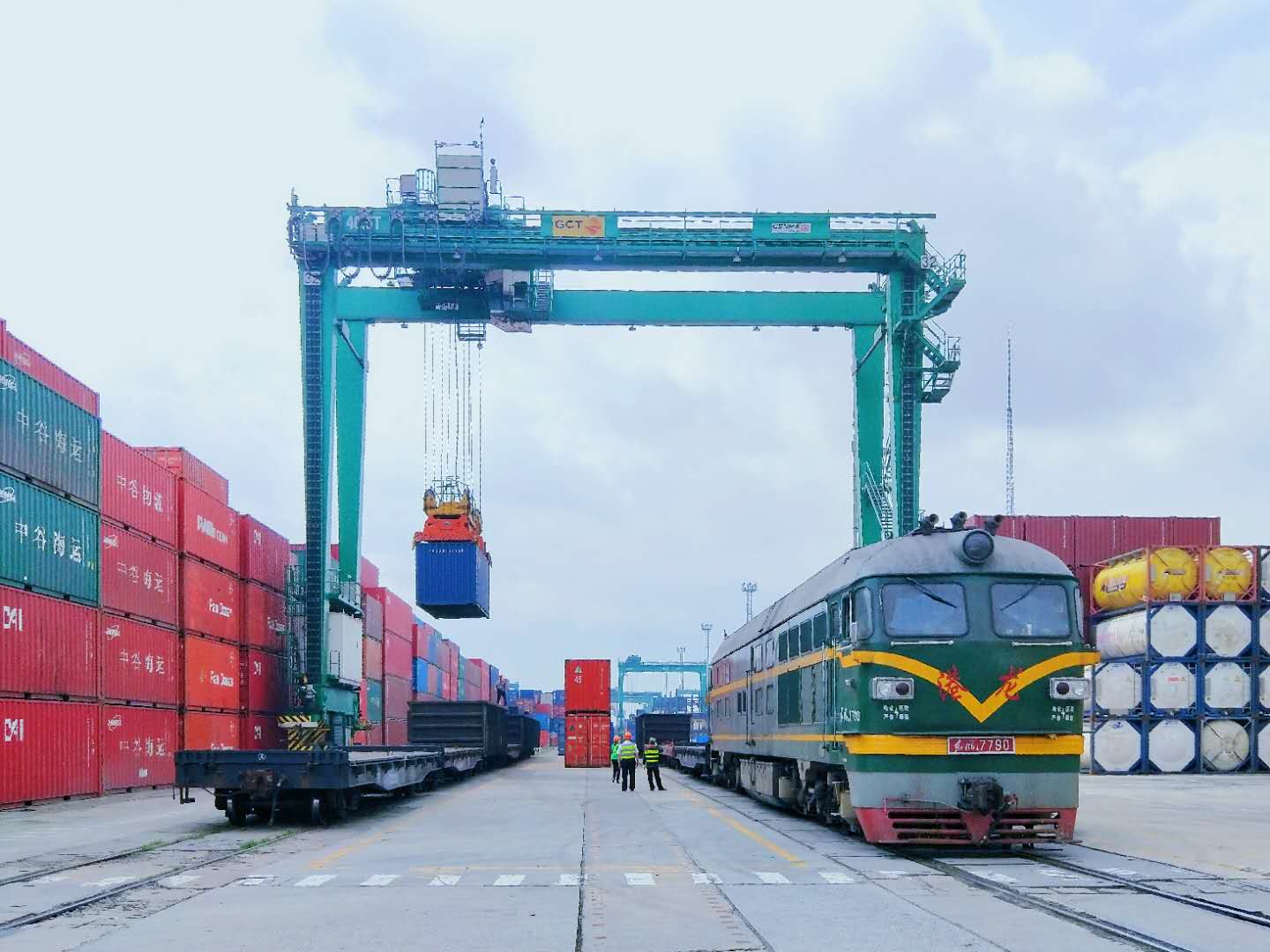Logistics
Guangzhou Port is faced with a vast economic hinterland, based on Guangdong, and supported by Guangzhou, covering Guangdong, Guangxi, Hunan, Hubei, Yunnan, Guizhou, Sichuan and parts of Henan, Jiangxi and Fujian. Guangzhou Port is the main distribution and collecting hub region for goods and materials in the Pearl River Delta, as well as Central and South China, Southwest China, South Jiangxi and South Fujian. Depending on its convenient sea, land and air transportation conditions, Guangzhou Port has developed into a gathering & distribution center for passenger flow and goods transportation in the above regions, and undertakes the mission for the re-export of domestic and foreign trade goods and materials.

Serving as a comprehensive major hub port in South China, Guangzhou Port actively promotes the strategy of "full coverage logistics", attaches great importance to the construction of inland ports and offices, and strives to utilize the sea-rail intermodal transport channel to further unblock the channel for inland enterprises to connect Guangzhou Port Areas and Nansha Free Trade Zone, build a bridge for the integration and development of inland and Guangzhou economic resources, thereby reducing logistics costs and improving logistics efficiency for inland. Since 2008, Guangzhou Port has set up offices in Changsha, Guiyang, Shanghai, Qinzhou, Qingyuan, Shaoguan, Wuzhou and Shaoyang; as well as inland ports in Kunming, Hengyang, Chenzhou, Yunfu, Ganzhou, Pingxiang and other places. The service network, composed of total 30 inland ports and offices distributed in the Pan-Pearl River Delta region today, covers the whole cargo output hinterland of the Pan-Pearl River Delta.
The Shuttle Bus Business, also called "Shuttle Bus" for short, is organized by GPG,operated and managed by the Shuttle Bus Operating Center of Guangzhou Port Shipping Co., Ltd., centering on Nansha Port Area, connecting the small and medium-sized terminals in the Pearl River Delta and the terminals in the Pan Pearl River Delta, as a waterway collecting and distributing hub for domestic and foreign trade.

In order to promote the development of container business in Nansha Port Area and drive the construction of an international shipping center in Nansha Port Area more effectively, Guangzhou Port Group organized operation of a public barge express line, Guangzhou Port "Shuttle Bus", between Nansha Port Area and major small and medium-sized terminal in the Pearl River Delta Region in July 2006, focusing on building a waterway collection and distribution network centered on Nansha Port Area and providing public, regular and cost-effective barge transportation services for liners and cargo owners from/to Nansha Port Area. the business allows various options of transportation, such as water-water intermodal transportation, river-sea intermodal transportation, internal and foreign trade container on-board transportation, WGO, etc. Since its first voyage in 2006, 67 barging routes (44 for foreign trade and 23 for domestic trade) have been launched so far, covering major small and medium-sized terminals in the Pearl River Delta. Since the release of Guangzhou Port "Shuttle Bus", the volume of containers has been increasing. In 2014, the volume of transport containers will exceed 1 million TEUs and 1.82 million TEUs will be completed in 2019.
As the Guangzhou Port Shuttle Bus is nature of public barging service and operates on schedule according to the published routes, its freight rate is also competitive and has received strong support and recognition from many liner and other barge companies affiliated to Nansha Port Area. At present, such shuttle bus service has been made available to more than ten liners, including CMA, MSK, COSCO, PIL, ONE, YML, ZIM, KMTC, WHL, etc.; barge line companies including Zhongshan Sinotrans, Zhuhai Hongfeng, Rongqi Guangshun, Haihe Shipping, Huasheng Shipping, Jiangmen Century, Xinhui Dacheng, Nanyang Shipping, etc.
3.Changing From Bulk Transport to Container Transport
Guangzhou Port Group actively promotes the changing from bulk transport to container transport and from container transport to bulk transport for large bulk cargo, changing from bulk transport to container transport for the import of lead and zinc concentrate, ferrochromium, grain and other goods in Xingang Terminal, Xinsha Terminal and Nansha Grain Terminal, with an annual freight volume for such transport exceeding 600,000 tons.

4.Multimodal Transport
In advantage of the developed Pearl River water system and the integrated transportation hub, Guangzhou Port develops multimodal transport through sea-rail channels, river-sea channels, land centralized and scattered transport channels and a diversified network of “international liner routes + shuttle bus branch lines/sea-rail transport trains + inland port offices".
